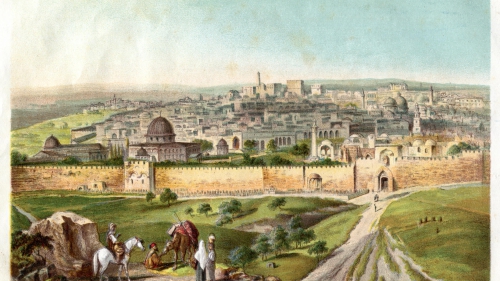Legend of the Coconut Head

Ibn Battuta was born in 1304 in Morocco's northern port of Tangier. He was one of the greatest travelers to ever walk the earth. In an era when few people possessed the means or the courage to follow their curiosity and venture off to discover the world, Ibn Battuta set out to complete Islam's traditional pilgrimage to Mecca, and ultimately spent the better part of his life exploring the world. In nearly 30 years on the road, Ibn Battuta traversed North Africa, Egypt, and the Swahili coast; reached Mecca on the Arabian Peninsula, passing through Palestine and Greater Syria en route; swung through Anatolia and Persia to Afghanistan; crossed the Himalayas to India, then Sri Lanka and the Maldives; and reached the eastern coast of China before turning around and zigzagging all the way back to Morocco. Then he figured, why not add on a few more years criss-crossing the Sahara?
Ibn Battuta travels are documented in the book called al-Rihla or "The Travels." Along his journey, he recorded copious observations, notes, insights, and lessons about the places he visited and the people he met.
In the following excerpt from the al-Rihla he describes, while traveling Southern India, his discovery of the coconut and a bizarre legend on how this fruit came about.
This is the 'Indian nut'. These trees are among the most peculiar trees in kind and most astonishing in habit. They look exactly like date-palms, without any difference between them except that the one produces nuts as its fruits and the other produces dates.
The nut of a coconut tree resembles a man's head, for in it are what look like two eyes and a mouth, and the inside of it when it is green looks like the brain, and attached to it is a fiber which looks like hair. They make from this cords with which they sew up ships instead of using iron nails, and they also make from it cables for vessels.
The coconut, especially that in the islands of Dhibat al-Mahal [Maldives], is the size of a human head, and they tell this story:
A certain philosopher in India in past ages was in the service of one of the kings and was held by him in high esteem. The king had a vizier, between whom and this philosopher there was enmity.
The philosopher said to the king, 'if this vizier's head is cut off and buried, there will bring advantage to the people of India and other peoples in the world.' The king said to him, 'And what if this that you have stated does not come from the head of the vizier?' He replied, if it does not, do with my head as you have done with his.' So the king gave orders to cut off the vizier's head, and the philosopher took it, planted a date-seed in his head, and tended it until it grew into a tree and produced this nut as its fruit.
This story is fiction, but we have related it because of its wide circulation among them 1.
Excerpted from: The Travels of Ibn Battutah by Ibn Battutah (Author), Tim Mackintosh-Smith (Editor)

















